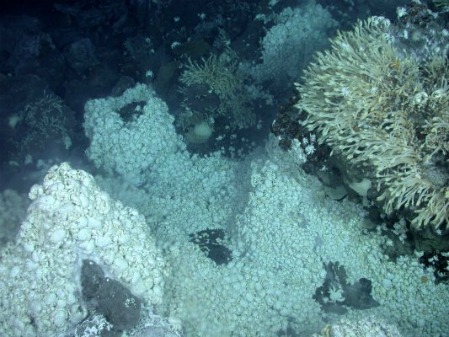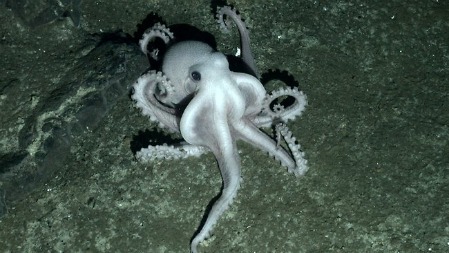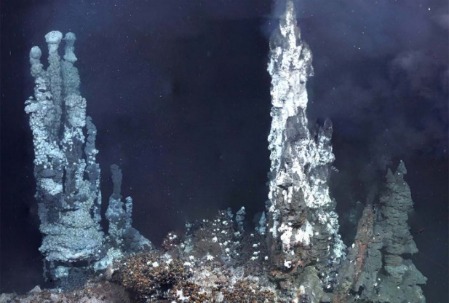The thing about Antarctica is it’s cold. Really cold. As in an average temperature of about 15 F on the warmer coastline and even more frigid in the interior. So maybe it’s no surprise that warm seeps and hydrothermal vent communities in that neck of the woods would march to their own beat. That’s exactly what a team of researchers has announced:
(Houston Chronicle) — Interestingly the life found at these hydrothermal vents varies significantly that made in the first discovery of hydrothermal vent life, back in the 1970s, on the Galapagos Rift, as well as elsewhere since then. “What we didn’t find is almost as surprising as what we did,” said Oxford University zoologist Alex Rogers, who led the research. “Many animals such as tubeworms, vent mussels, vent crabs, and vent shrimps, found in hydrothermal vents in the Pacific, Atlantic, and Indian Oceans, simply weren’t there.”
One of the things that’s exciting about this isn’t simply the evolutionary divergence, the warm seeps under the frigid Southern Ocean and ice shelves are about as close as anything on earth to what could lay under the thick ice of Jupiter’s second moon Europa.
Some more pics:





Oh how quaint: Farenheit. Let me go ask my grandfather if he has a farenheit to celcius converter handy.
What could lie (intransitive). I don’t expect anything on Europa except perhaps chemoautotrophic bacteria, but it’s nice to hope.
Any idea what are those white things in the picture? Barnacles, perhaps?
It was only while reading about these latest discoveries that I realized that hydrothermal vents are nearly 400° Centigrade, not Fahrenheit; in other words they’re over 700° F.
“All These Planets Are Yours Except Europa, Attempt No Landing There…”
What an elegant cephalopod. And yes, what are those white lumpy things in the main/top pic? Are they creatures or formations?
Can’t think in Fahrenheit, though!
@1. tommccann :
Not your grandfather but perhaps this site will be of some use here :
http://www.metric-conversions.org/temperature/celsius-to-fahrenheit.htm
Learning whether life lies beneath Europa’s crust would be awesome but its even pretty interesting to imagine what lifeforms (if any) may exist under Lake Vostok :
http://en.wikipedia.org/wiki/Lake_Vostok
and its fellow sub-ice-sheet hidden lakes.
I like the Octopus.
Or just use Google(tm)’s built-in converter:
15 F in C
Where the top result is:
15 degrees Fahrenheit = -9.44444444 degrees Celsius
Handy-dandy for all sorts of conversions, e.g.,
1 furlong per fortnight
Result:
1 (furlong per fortnight) = 0.000166309524 m / s
did that octopus move in recently? i don’t think those eyes would do it much good down there.